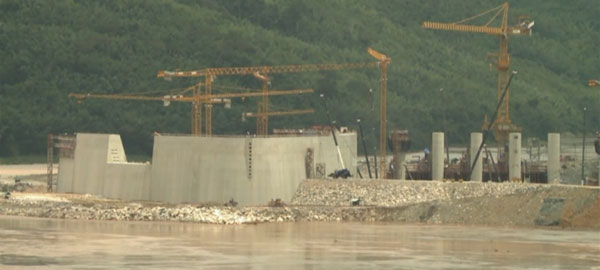The access to reliable and affordable sources of energy plays a critical role in the economic development of any country. A report presented the challenges of Myanmar and Laos to manage their energetic resources and develop their economy in relation with their Southeast Asian neighbors.
The energetic opportunity for Myanmar and Laos is to exploit their natural resources, be it oil and gas or hydro power, to enhance the growth of their under-developed economies and foster trade. Their challenge will be to do this while also integrating their ambitious projects into the broader Southeast Asian business, economic and political environment.
Oil and gas to power Myanmar’s economic growth
Energy is key to the expansion of Myanmar’s economy: if it wants to grow from one of the poorest countries in Southeast Asia to an economic tiger, it needs to implement a long-term energy planning to emulate Thailand’s success in its energy mix and energetic security.
There is currently only about one quarter of the population of Myanmar that is connected to the electricity network, with an electricity consumption per capita that is one of the lowest in Southeast Asia. To tackle this issue, Myanmar’s government hopes to tap into its important oil and, especially, natural gas reserves to power plants and provide export revenues, letting it plan to have all houses connected to the electricity network by 2030.
Myanmar’s oil and natural gas supply and demand
But the oil an gas industry in Myanmar is not well equipped to produce them: manual oil-drilling is still in practice, as common people work with handmade tools and machinery to extract small quantities of low quality oil, earning an income that is comparatively decent for the country.
Myanmar’s opening since 2011 has created a strong demand for cars, which attracts foreign car brands. And as the automobile market expands, the demand for fuel also increases quickly, stressing the country’s energetic resources even more and increasing the need for import of refined petroleum.
To satisfy Myanmar’s appetite for energy, its opening has allowed global oil corporations with proper technologies and infrastructures to invest and start exploiting its still mostly unexplored potential reserves, but it will take years before the production can match the demand.
Laos’s hydroelectric resources development
Laos is a very small country in terms of size and population, but it has enormous hydroelectric resources to trade to its neighbors thanks to the Mekong river. Aware of this potential, some Thai companies have started to invest in Laos to provide electricity to Thailand, making electricity a major export for the Lao economy.
For now, tourism and agriculture make up for more than 50% of Laos’s economy, the rest coming from the exploitation of natural resources (gold, copper, bauxite) and the Mekong river’s hydro power, which is estimated at about 20% of the total wealth of Laos. Several dam projects are under way to expand the Lao electric production capacity.
But Laos’s projects on the Mekong is harming relations with its neighbors and environmental protection groups. Damming could endanger native species and impact very negatively the waters level and natural sedimentation. The Mekong is also an important vector of food production and security in both Vietnam and Cambodia, therefore creating tensions with Laos.
Report from Bloomberg initially aired in 2014



![Energy outlook for Southeast Asia [report] Southeast Asia energy outlook](https://aseanup.com/wp-content/uploads/2016/03/Southeast-Asia-energy-outlook-150x68.jpg)





